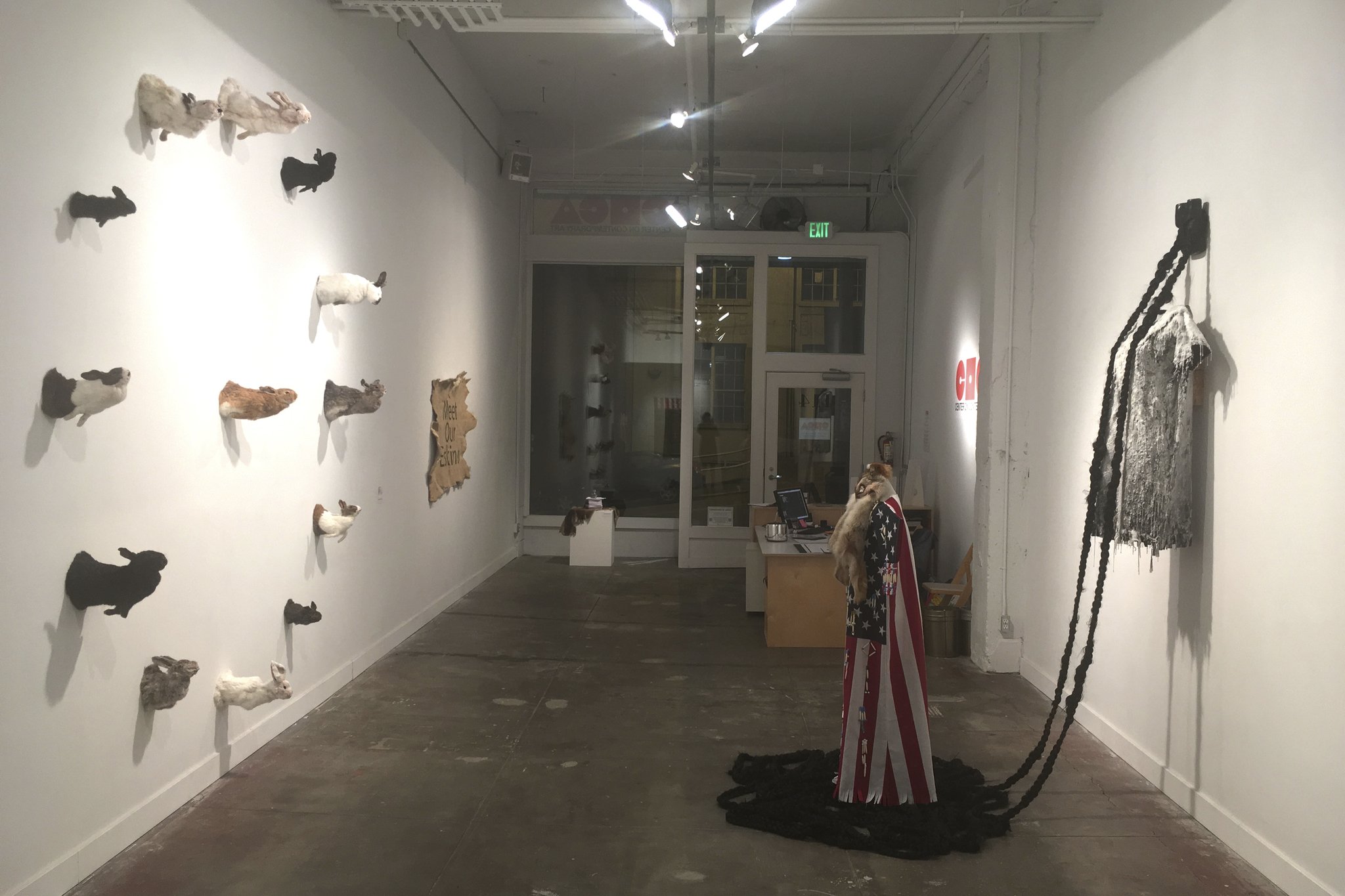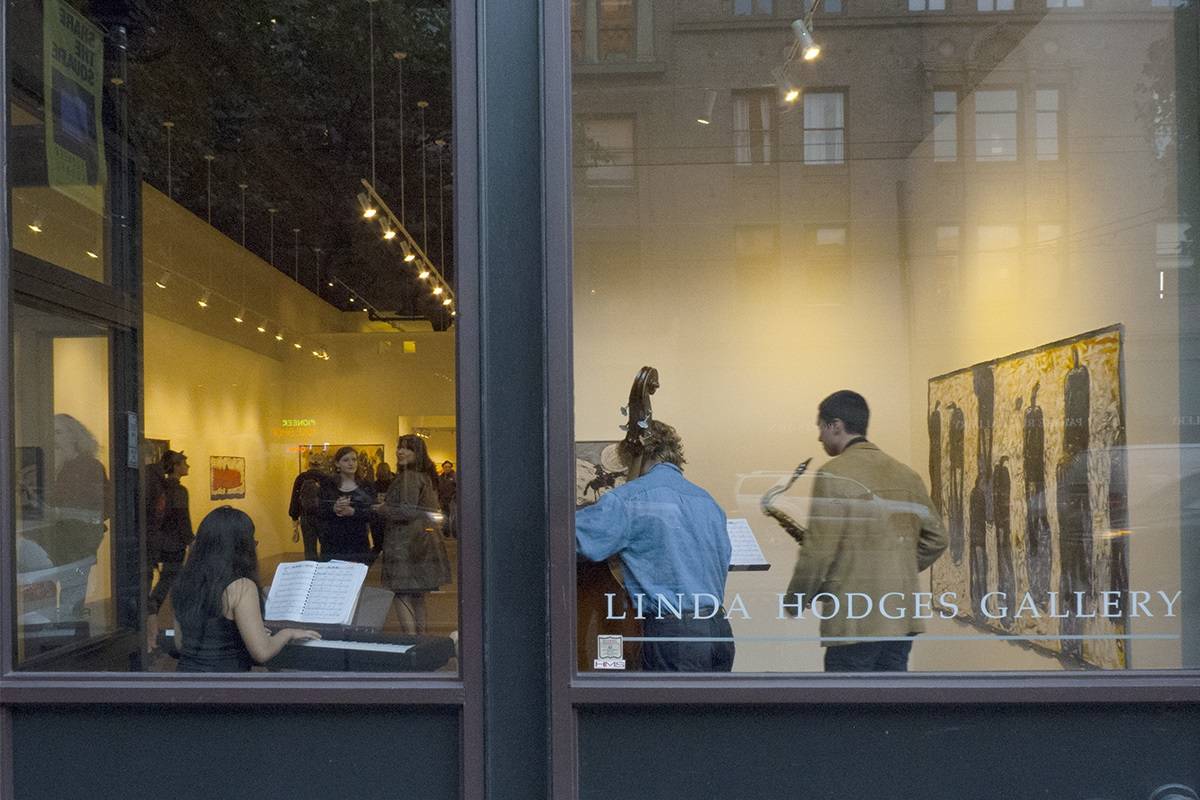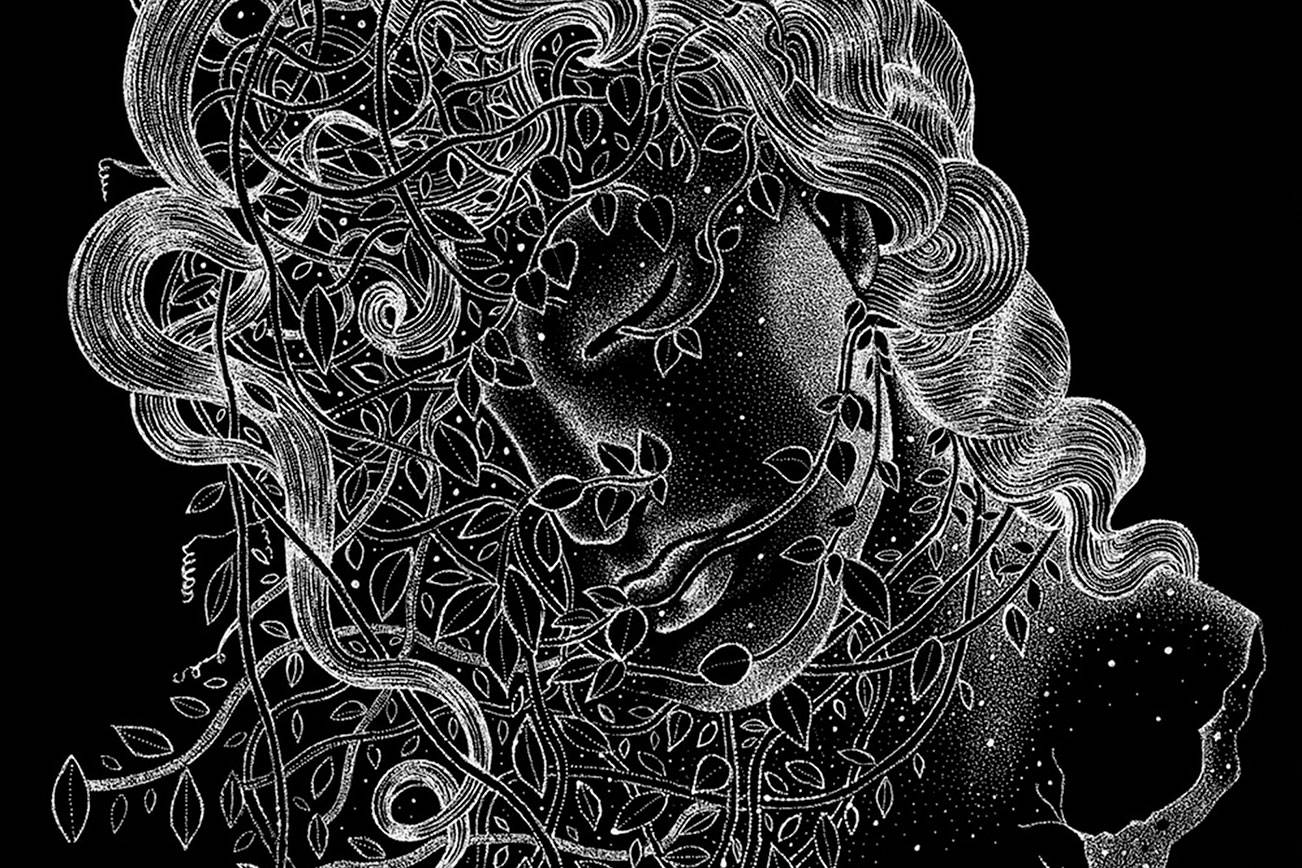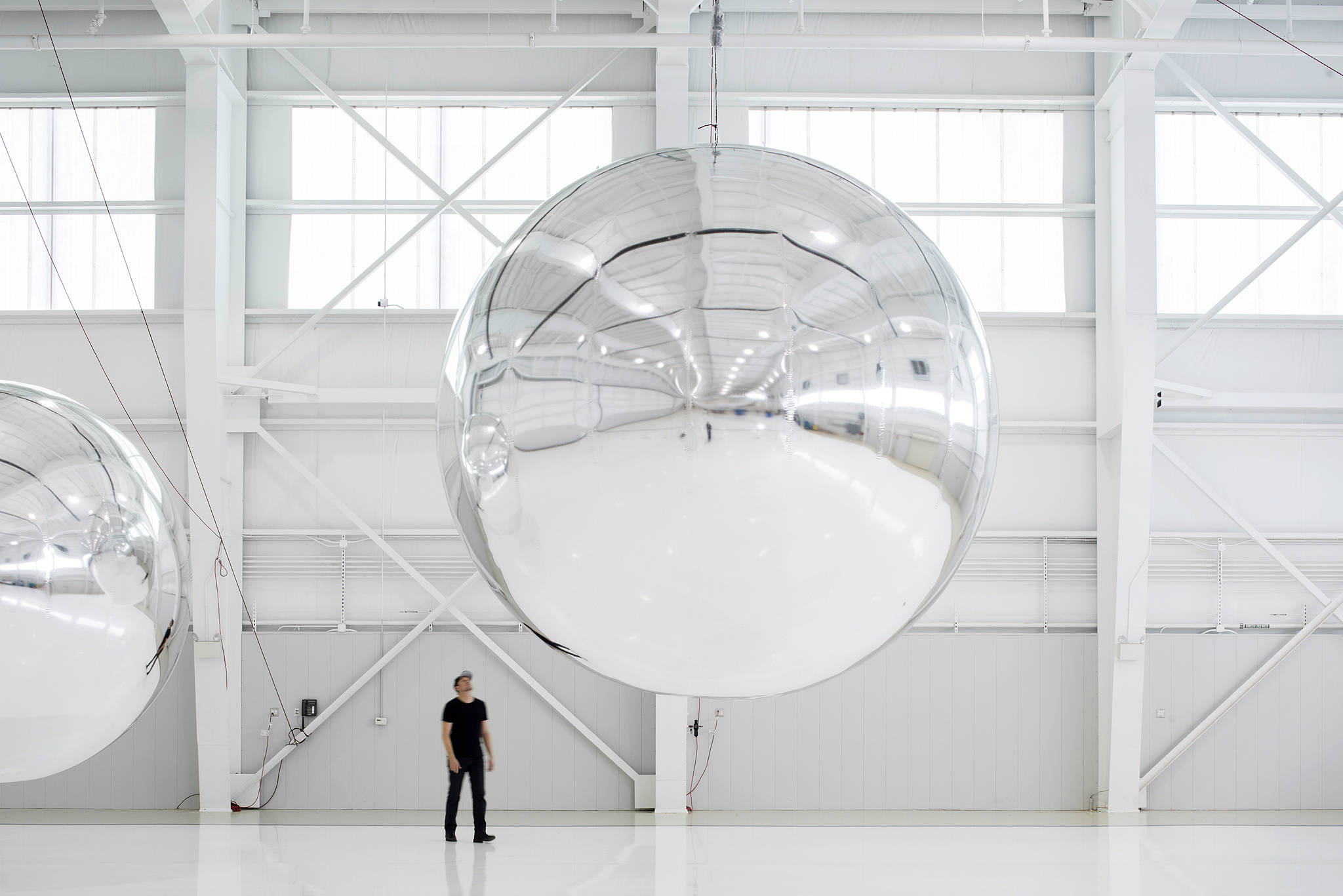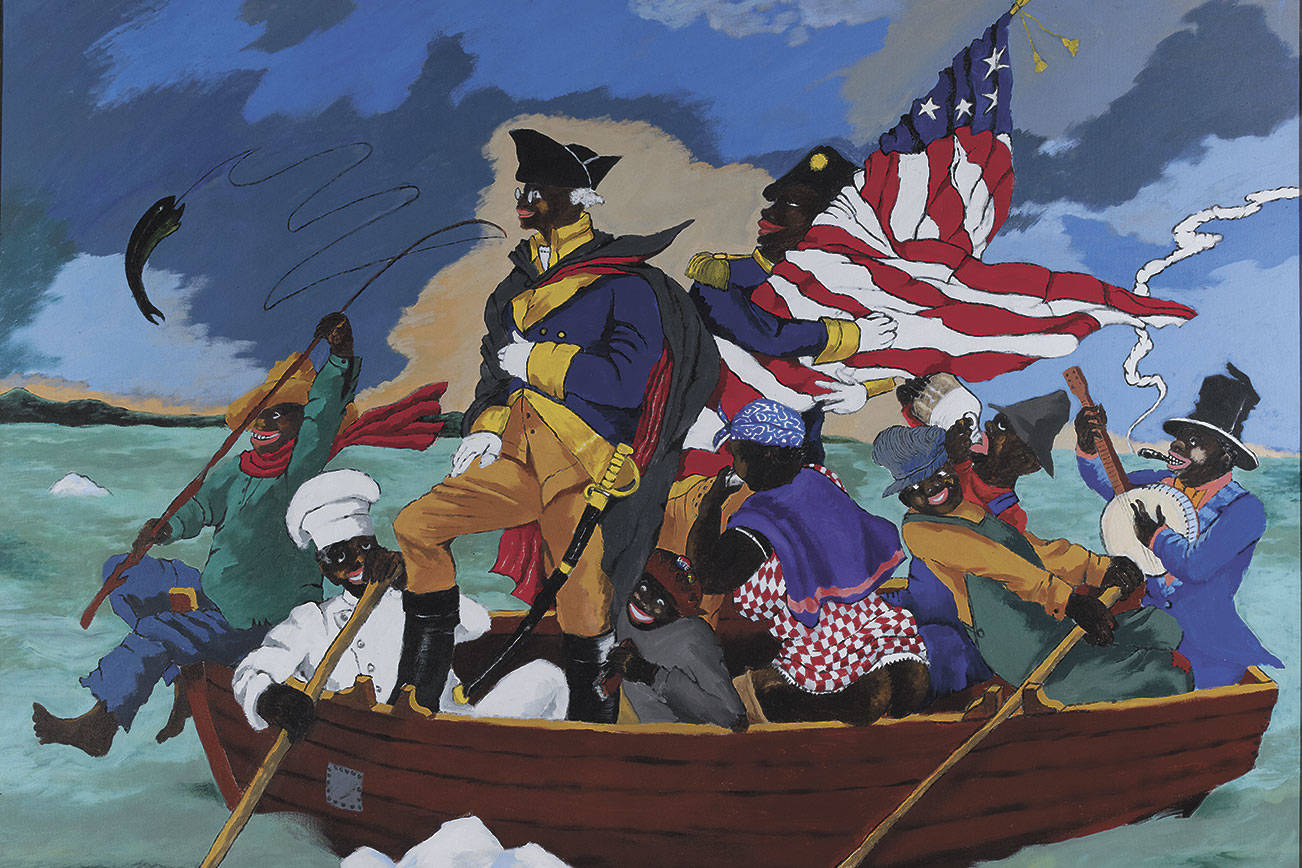After seeing months of protest at Standing Rock and increasing international scrutiny, the Army Corps of Engineers announced this weekend that no easement to cross Lake Oahe would be granted for the planned Dakota Access Pipeline. The situation is a detente, not a victory. The fight over the project, the land, tribal sovereignty, and the right to protest is not over. In fact, there are already murmurs from Trump advisors of privatizing reservation land for oil and coal mining in the next four years.
These events have starkly illuminated the ongoing, historic oppression of America’s indigenous peoples. That there was genocide is generally understood, but the U.S. has never fully confronted that legacy, let alone how genocide is perpetuated in the present.
Artist Christine Babic, a member of the Chugach Alutiiq tribe of Alaska, pointedly confronts this in her show at CoCA, When She Dies, You Too Will Die. Its title is at base a call to care for the natural world that sustains us. However, through the works Babic has assembled, one also sees this prophecy of a shared fate applied between cultures. That is, by participating in the destruction of another, one plants the seed of one’s own destruction. The destruction to come may happen in spirit or through actual environmental havoc … or both, especially when indigenous activists have consistently been among our most active environmental stewards.
Water protectors at Standing Rock were not just trying to prevent imminent harm to the tribes directly downstream from the pipeline, but to millions of others who rely on those water sources and millions more who will face similar conflicts to come. Babic knows all too well the deadly consequences of an oil disaster: The 1989 Exxon Valdez spill ravaged the coastline of her home when she was just a toddler. Family members who worked on clearing the toxic sludge died of cancer; those who survived found it hard to recover in other ways.
“I’ve seen firsthand what crude oil does to the environment,” Babic says, “and as indigenous people, we rely so heavily on the land [and] its resources for ceremony, for subsistence, and for our craft. For many of us, this is still is a singular source of income.”
Proponents of pipeline projects insist that they are more environmentally sound and safer than tanker transport, but frankly, appeals to public safety were undermined the moment that attack dogs and water cannons were unleashed on unarmed civilians. Setting that aside, one should question the dogmatic dependency on oil that makes its transport a foregone conclusion in these arguments.
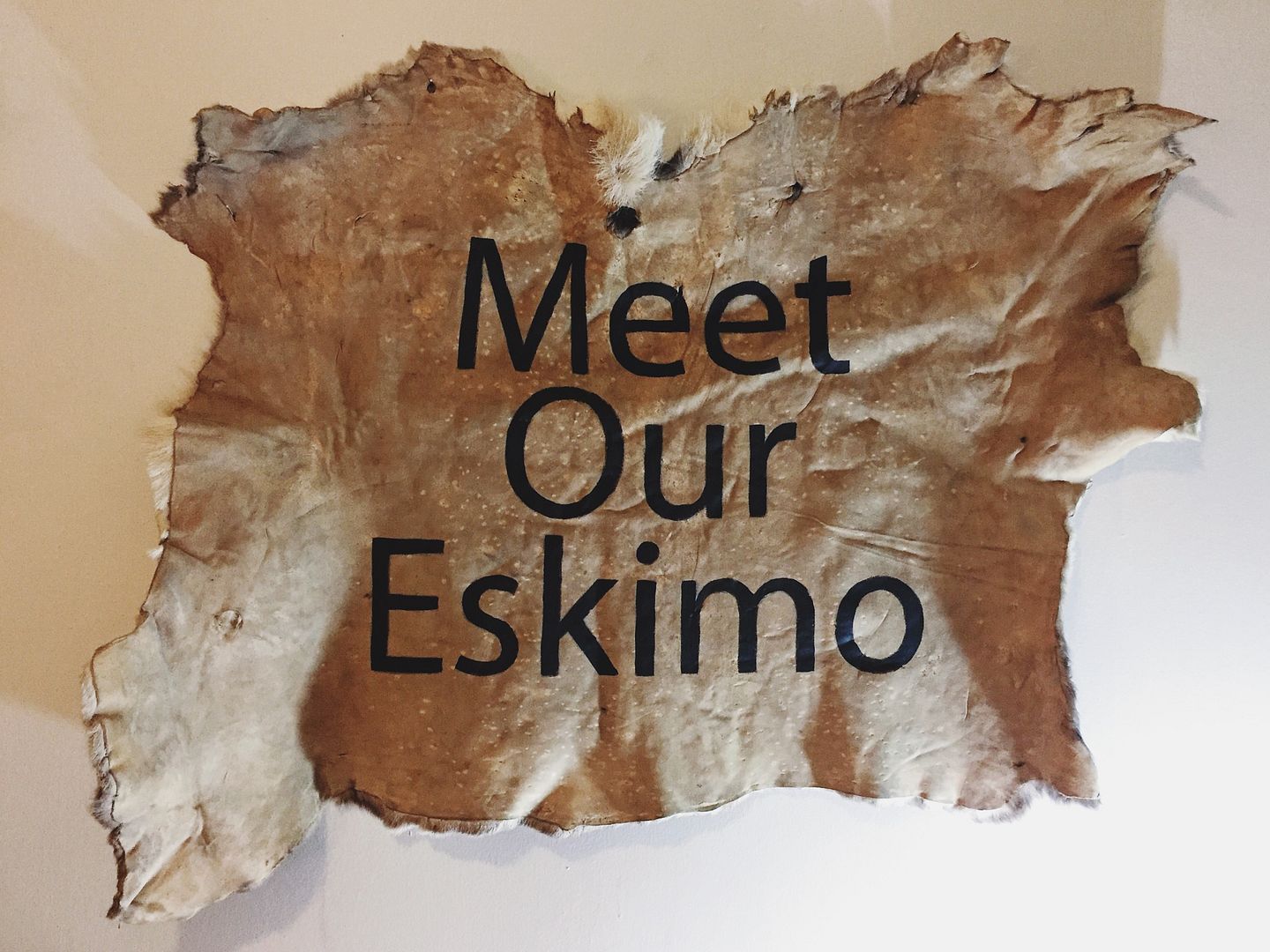
Walking into CoCA’s gallery, one of the first things one sees is a comment on that: on the far wall, an American flag hanging with its stripes down, soaked nearly to the top in pitch black. It’s a bit on-the-nose, but clarity, not novelty, is this show’s highest aim, and it consistently hits that mark. For instance, there is the clarity about how blatantly Native American lives and bodies have been commodified. By the entrance, a pelt is stretched against the wall, its leather interior facing out and bearing the stenciled words MEET OUR ESKIMO. This was the marketing phrase Alaskan Airlines used when it introduced its trademark Eskimo man image, seen on the fins of their planes and branded ephemera. That phrase may not sound problematic to everyone, as we are culturally desensitized to the use of Native American stereotypes (and slurs), found readily in costume shops and on the official swag of sports teams. As an exercise, one might switch “Eskimo” with any other race or minority group and see how it reads. This reduction of a culture to a novelty becomes all the more troubling when one knows that the United States government made a concerted effort to conquer through forced assimilation, placing Native American children in schools where they were compelled to reject their heritage and punished for speaking their own language.
The traditional Chugach Alutiiq clothing included in the show references such policies while also proving the resilience of those who defied them. The piece Pedagogy of the Oppressed shows an exquisite coat, satchel, and pair of boots made by Babic’s mother, bound and suspended by heavy chains. The title comes from a book of the same name by Paolo Freire. Babic points to this quote in particular: “It is necessary that the weakness of the powerless is transformed into a force capable of announcing its justice. For this to happen, a total denouncement of fatalism is necessary. We are transformative beings and not beings for accommodation.” As one rejects fatalism before reclaiming sovereignty, one must also recognize certain forces beyond one’s immediate control. Especially in the case of indigenous populations, it is perilous to ignore the trauma that comes parceled with the heritage that one is claiming and sustaining. Babic acknowledges this as well.
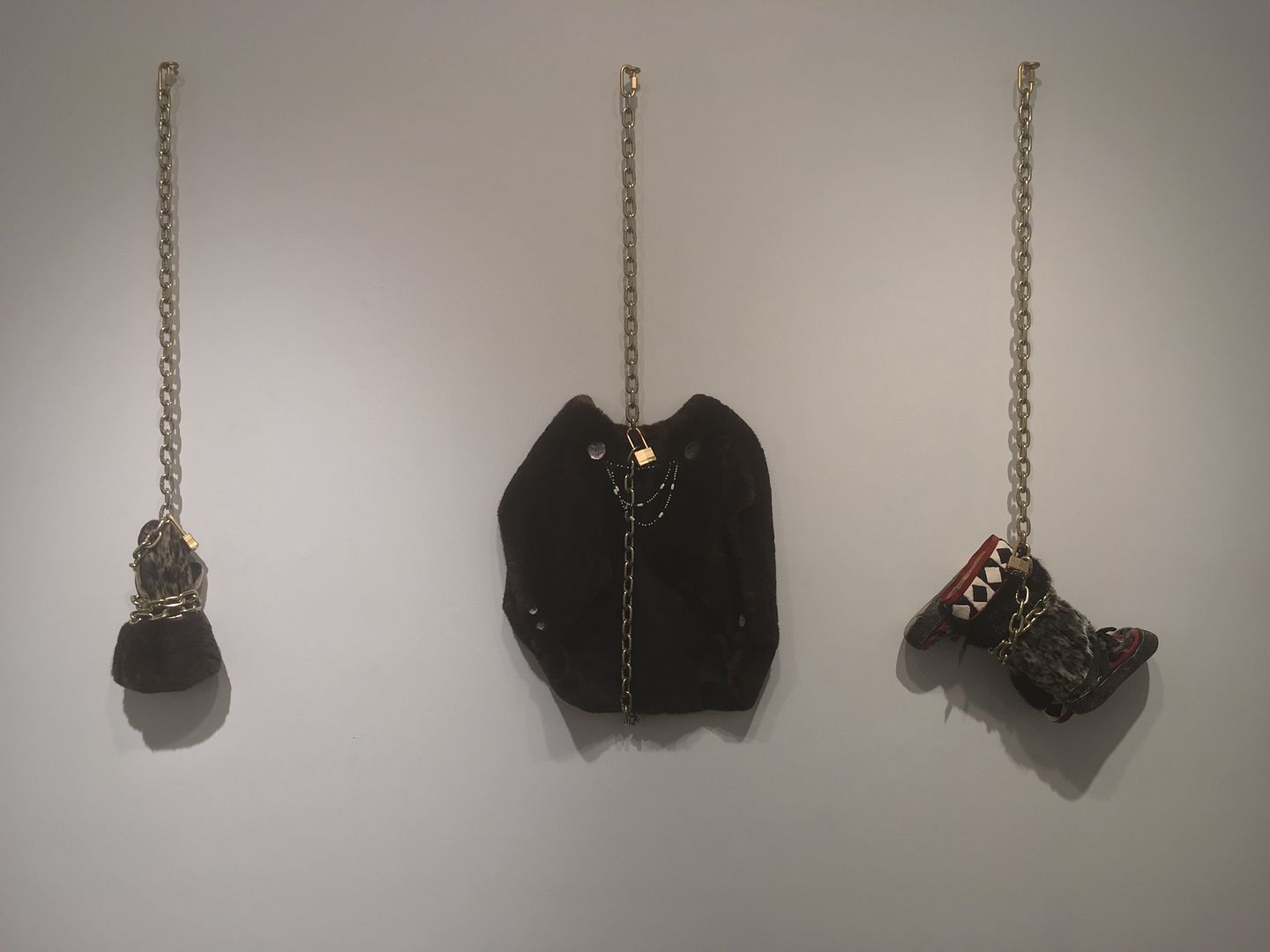
Across from Pedagogy hangs a white button-down shirt that belonged to Babic’s grandmother. It is embellished with letters cut from sealskin, reading, in fragmented lines down the right breast, INTERGENERATIONAL TRAUMA. Among the rich furs in the room, the flimsy shirt becomes an apt symbol of assimilation, disappearing into the whiteness of the wall behind it. Government policies and programs sought to reduce its original bearer to a ghost of herself; it’s the garment that is now ghostly. What is most material is that fragmented text, the trauma that may induce destruction or transformation.
In her broad examination of violence, power, and cruelty, Babic does not indulge a binary view of perpetrator/victim. The presence and arrangement of so many skins in the space makes the phenomenon more cyclical than linear, and this deepens one’s understanding of the shared fate alluded to in the show’s title. The circular arrangement of Babic’s installation Portal also points to this, though it can be read in countless ways. More than a dozen rabbit pelts are taxidermied into hollow, eyeless forms that extend out from the wall in a ring more than six feet in diameter. Though more alike than dissimilar, they each gape with a slightly different bend and expression.
Babic skinned them herself during her CoCA Lab Residency in October as part of her project, Genocide Rules Everything Around Me, in anticipation of this show. Flaying is an apt analog for the cultural process by which an oppressed culture is reduced to an image alone, then sold as a commodity. (Cf. “Meet Our Eskimo.”) It isn’t only Native Americans, but any colonized or marginalized people, who experience this, and so indeed a slow cultural genocide pervades and rules the culture. Notably, Babic’s facility as a hunter shows how different it is to hunt for sustenance and flay for clothing than it is to destroy another based on ideological difference. The respectful hunter knows there is a mortal equality in the end. The ideologue does not.
CoCA’s show of works by Robert Ernst Marx in November illustrated similar concepts with somber gravity. Babic’s When She Dies, You Too Will Die adds a personal, visceral component. For the second month in a row, I recommend a trip to its Pioneer Square gallery for a dose of sobering sanity and—despite the suffering depicted—a little hope. When She Dies, You Too Will Die, CoCA Gallery, 114 Third Ave. S., cocaseattle.org. 10:30 a.m.–4:30 p.m. Thurs.–Sat. Ends Dec. 23. visualarts@seattleweekly.com
